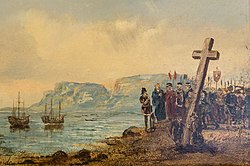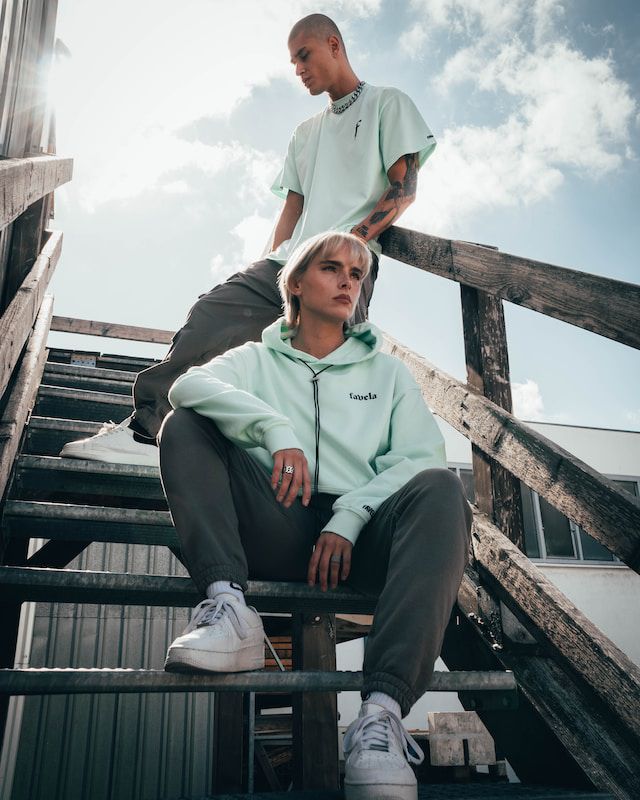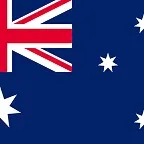
South Africa
South Africa, officially the Republic of South Africa (RSA), is the southernmost country in Africa.[d] Its nine provinces are bounded to the south by 2,798 kilometres (1,739 miles) of coastline that stretches along the South Atlantic and Indian Ocean;[18][19][20] to the north by the neighbouring countries of Namibia, Botswana, and Zimbabwe; to the east and northeast by Mozambique and Eswatini; and it encloses Lesotho.[21] Covering an area of 1,221,037 square kilometres (471,445 square miles), the country has a population of over 63 million people. Pretoria is the administrative capital, while Cape Town, as the seat of Parliament, is the legislative capital, and Bloemfontein is regarded as the judicial capital.[22] The largest, most populous city is Johannesburg, followed by Cape Town and Durban.
Archaeological findings suggest that various hominid species existed in South Africa about 2.5 million years ago, and modern humans inhabited the region over 100,000 years ago. The first known people were the indigenous Khoisan, and Bantu-speaking peoples from West and Central Africa later migrated to the region 2,000 to 1,000 years ago. In the north, the Kingdom of Mapungubwe formed in the 13th century. In 1652, the Dutch established the first European settlement at Table Bay, Dutch Cape Colony. Its invasion in 1795 and Battle of Blaauwberg in 1806 led to British occupation. The Mfecane, a period of significant upheaval, led to the formation of various African kingdoms, including the Zulu Kingdom. The region was further colonised, and the Mineral Revolution saw a shift towards industrialisation and urbanisation. Following the Second Boer War, the Union of South Africa was created in 1910 after the amalgamation of the Cape, Natal, Transvaal, and Orange River colonies, becoming a republic after the 1961 referendum. The multi-racial Cape Qualified Franchise in the Cape was gradually eroded, and the vast majority of Black South Africans were not enfranchised until 1994.
The National Party imposed apartheid in 1948, institutionalising previous racial segregation. After a largely non-violent struggle by the African National Congress and other anti-apartheid activists both inside and outside the country, the repeal of discriminatory laws began in the mid-1980s. Universal elections took place in 1994, following which all racial groups have held political representation in the country's liberal democracy, which comprises a parliamentary republic and nine provinces.
South African society encompasses a variety of cultures, languages, and religions; the country is often called the "rainbow nation" to describe its multiracial, multicultural diversity, especially in the wake of apartheid.[23] Recognised as a middle power in international affairs, South Africa maintains significant regional influence and is a member of BRICS+, the African Union, SADC, SACU, the Commonwealth of Nations, and the G20.[24][25] A developing, newly industrialised country, it has the largest economy in Africa by nominal GDP,[26][27] is tied with Ethiopia for the most UNESCO World Heritage Sites in Africa,[28] and is a biodiversity hotspot with unique biomes, plant, and animal life. Since the end of apartheid, government accountability and quality of life have substantially improved for non-white citizens.[29] However, crime, violence, poverty, and inequality remain widespread, with about 32% of the population unemployed as of 2024,[30][31] while some 56% lived below the poverty line.[32][33] Having the highest Gini coefficient of 0.63, South Africa is considered one of the most economically unequal countries in the world.[34][35]
Etymology
The name "South Africa" is derived from the country's geographic location at the southern tip of Africa. Upon formation, the country was named the Union of South Africa in English and Unie van Zuid-Afrika in Dutch, reflecting its origin from the unification of four British colonies. Since 1961, the long formal name in English has been the "Republic of South Africa" and Republiek van Suid-Afrika in Afrikaans. The country has an official name in 12 official languages.[36][37]
Mzansi, derived from the Xhosa noun uMzantsi meaning "south", is a colloquial name for South Africa,[38][39] while some Pan-Africanist political parties prefer the term "Azania".[40]
History
Prehistoric archaeology

South Africa contains some of the oldest archaeological and human-fossil sites in the world.[41][42][43] Archaeologists have recovered extensive fossil remains from a series of caves in Gauteng Province. The area, a UNESCO World Heritage Site, has been branded "the Cradle of Humankind". The sites include Sterkfontein, one of the richest sites for hominin fossils in the world, as well as Swartkrans, Gondolin Cave, Kromdraai, Cooper's Cave and Malapa. Raymond Dart identified the first hominin fossil discovered in Africa, the Taung Child (found near Taung) in 1924. Other hominin remains have come from the sites of Makapansgat in Limpopo Province; Cornelia and Florisbad in Free State Province; Border Cave in KwaZulu-Natal Province; Klasies River Caves in Eastern Cape Province; and Pinnacle Point, Elandsfontein and Die Kelders Cave in Western Cape Province.[44]
These finds suggest that various hominid species existed in South Africa from about three million years ago, starting with Australopithecus africanus,[45] followed by Australopithecus sediba, Homo ergaster, Homo erectus, Homo rhodesiensis, Homo helmei, Homo naledi and modern humans (Homo sapiens). Modern humans have inhabited Southern Africa for at least 170,000 years. Various researchers have located pebble tools within the Vaal River valley.[46][47]
Bantu expansion

Settlements of Bantu-speaking peoples, who were iron-using agriculturists and herdsmen, were present south of the Limpopo River (now the northern border with Botswana and Zimbabwe) by the 4th or 5th century AD. The Bantu slowly moved south. The earliest ironworks in modern-day KwaZulu-Natal Province are believed to date from around 1050 AD.[48] The southernmost group was the Xhosa people, whose language incorporates certain linguistic traits from the earlier Khoisan people. The Xhosa reached the Great Fish River, in today's Eastern Cape Province. As they migrated, these larger Iron Age populations displaced or assimilated earlier peoples. In Mpumalanga Province, several stone circles have been found along with a stone arrangement that has been named Adam's Calendar, and the ruins are thought to be created by the Bakone, a Northern Sotho people.[49][50]
Mapungubwe
Around 1220, in the Limpopo-Shashe Basin, the elite of K2 moved to settle the flat-topped summit of Mapungubwe Hill, with the population settling below. Rainmaking was crucial to the development of sacral kingship. By 1250, the capital had a population of 5000 and the state covered 30,000 km2 (11,500 square miles), growing wealthy through the Indian Ocean trade. The events around Mapungubwe's collapse circa 1300 are unknown, however trade routes shifted north from the Limpopo to the Zambezi, precipitating the rise of Great Zimbabwe. The hill was abandoned and Mapungubwe's population scattered.[51]
Portuguese exploration

In 1487, the Portuguese explorer Bartolomeu Dias led the first European voyage to land in southern Africa.[52] On 4 December, he landed at Walfisch Bay (now known as Walvis Bay in present-day Namibia). This was south of the furthest point reached in 1485 by his predecessor, the Portuguese navigator Diogo Cão (Cape Cross, north of the bay). Dias continued down the western coast of southern Africa. After 8 January 1488, prevented by storms from proceeding along the coast, he sailed out of sight of land and passed the southernmost point of Africa without seeing it. He reached as far up the eastern coast of Africa as, what he called, Rio do Infante, probably the present-day Groot River, in May 1488. On his return, he saw the cape, which he named Cabo das Tormentas ('Cape of Storms'). King John II renamed the point Cabo da Boa Esperança, or Cape of Good Hope, as it led to the riches of the East Indies.[53] Dias' feat of navigation was immortalised in Luís de Camões' 1572 epic poem, Os Lusíadas.
Dutch colonisation

In 1595, the Dutch made their first contact with the coast of Southern Africa. With Portugal's maritime power declining in the early 17th century, English and Dutch merchants competed to dislodge Portugal's lucrative monopoly on the spice trade.[54] British East India Company representatives sporadically called at the cape in search of provisions from as early as 1601 but later came to favour Ascension Island and Saint Helena as ports of refuge.[55] Dutch interest was aroused after 1647, when two employees of the Dutch East India Company were shipwrecked at the cape for several months. The sailors were able to survive by obtaining fresh water and meat from the natives.[55] They also sowed vegetables in the fertile soil.[56] Upon their return to Holland, they reported favourably on the cape's potential as a "warehouse and garden" for provisions to stock passing ships for long voyages.[55]
In 1652, a century and a half after the discovery of the cape sea route, Jan van Riebeeck established a victualling station at the Cape of Good Hope, at what would become Cape Town, on behalf of the Dutch East India Company.[57][58] In time, the cape became home to a large population of vrijlieden, also known as vrijburgers (lit. 'free citizens'), former company employees who stayed in Dutch overseas territories after serving their contracts.[58] Dutch traders also brought thousands of enslaved people to the fledgling colony from present-day Indonesia, Madagascar, and eastern Africa.[59] Some of the earliest mixed race communities in the country were formed between vrijburgers, enslaved people, and indigenous peoples.[60] This led to the development of a new ethnic group, the Cape Coloureds, most of whom adopted the Dutch language and Christian faith.[60]
Conflicts over resources between South Africa's indigenous Khoisan people and Dutch settlers began in the 17th century and continued for centuries.[61]
Dutch colonists' eastward expansion caused wars with the southwesterly migrating Xhosa nation, known as the Xhosa Wars, as both sides competed for the pastureland near the Great Fish River, which the colonists desired for grazing cattle.[62] Vrijburgers who became independent farmers on the frontier were known as Boers, with some adopting semi-nomadic lifestyles being denoted as trekboers.[62] The Boers formed loose militias, which they termed commandos, and forged alliances with Khoisan peoples to repel Xhosa raids.[62] Both sides launched bloody but inconclusive offensives, and sporadic violence, often accompanied by livestock theft, remained common for several decades.[62]







